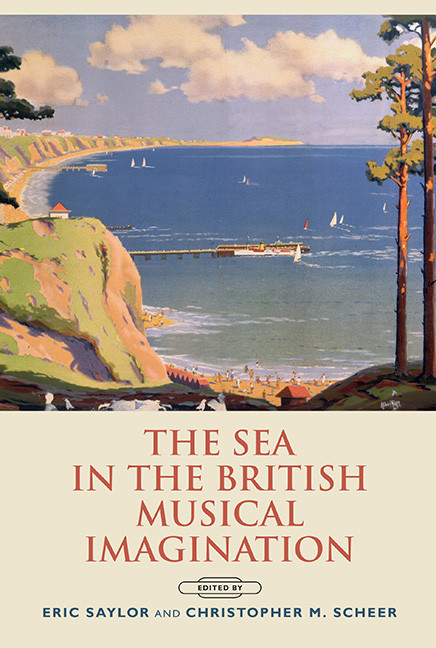6 - Jolly Jack Tar: Musical Caricature and Characterization of the British Sailor, c. 1875–1925
Published online by Cambridge University Press: 12 June 2021
Summary
FIGURE 6.1 REPRODUCES the opening gambit William Walton conceived for his setting (in Façade, 1921) of Edith Sitwell's poem ‘Hornpipe’ (‘Sailors come / To the drum / Out of Babylon’). It is an arresting gesture: an exceedingly familiar melody is presented by a single snare drum – stripped of its pitch content, though not of its popular and patriotic associations. When pitches of the melody are finally introduced (in the saxophone and pizzicato cello), they are obscured by the introduction of a different, but equally familiar, melody in the other instruments. The quodlibet texture presents the chorus of Arne's ‘Rule, Britannia!’ and the traditional fiddle tune generally known as the College Hornpipe. It is this fiddle ‘hornpipe’ that seems to have been Sitwell's point of departure as she devised the metre of her verse, which follows the tune's melodic rhythms closely throughout. As with the other numbers of Façade, Walton's ‘Hornpipe’ is ‘over in a flash, but unerringly pin[s] down some particular aspect of popular music’. In this instance, the combination of the hornpipe with Arne's national air (nowhere suggested in the text of the poem) situates this setting as a descendent of a distinct middlebrow tradition dating back decades in British musical culture, which morphed over time from theatrical burlesque to popular patriotic prototype to sophisticated ironic modernist trope. It should be noted, though, that these phases refer to the origins of such music, as (some) works from all three phases have maintained a place in the mainstream performance repertory from their genesis.
Phase I: Burlesquing Jack Tar
Mary Conley has recently documented the rehabilitation of the British sailor from the late Victorian years through World War I, where the image of the debauched and drunken ‘Jolly Jack Tar’ of Nelson's day was supplanted by that of a heroic, professional, and ostensibly clean-living modern seaman. As she has argued, although there was massive change within the culture of the navy under Victoria and Edward VII, this was not aligned, nor was it concurrent, with the changing reputation of the sailor – which relied upon media representations of sailors rather than the genuine article.
- Type
- Chapter
- Information
- The Sea in the British Musical Imagination , pp. 105 - 126Publisher: Boydell & BrewerPrint publication year: 2015
- 1
- Cited by

